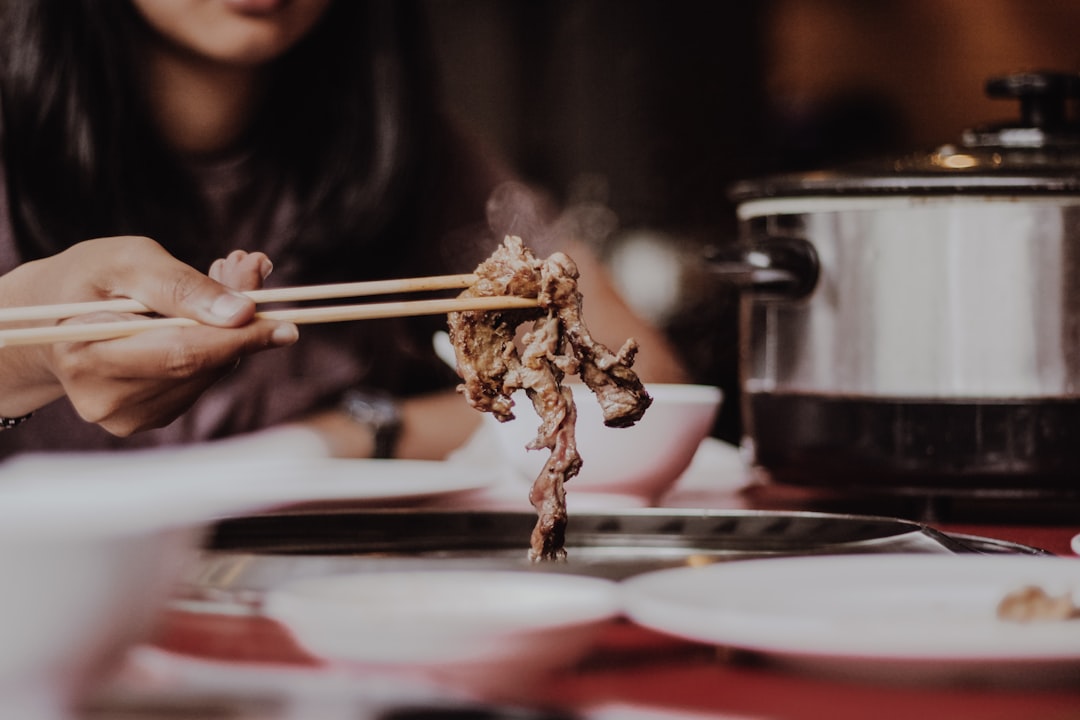Yakiniku
Yakiniku is best enjoyed when accompanied by flavorful sides such as kimchi, pickles and other accompaniments to create a truly delectable feast. The main ingredients of Yakiniku are typically marinated beef or pork which is then grilled to succulent perfection over charcoal or gas. These meaty morsels are often served atop bowls of steamed rice, garnished with scallions and sesame seeds for a crunchy, slightly bitter contrast.
The beauty of Yakiniku lies in its simplicity. The marinade is often kept simple, allowing the full flavor of the meat to shine through without overpowering the palate. This rustic taste has been endearing Japanese people for generations, with its umami richness creating a gastronomic experience like no other.
However, while the fundamentals of Yakiniku remain largely unchanged, some modern chefs have started to experiment with variations of the dish, adding their own flair and flavor to this beloved classic. From honey-glazed beef and miso-marinated pork to teriyaki chicken and tofu skewers, the possibilities are virtually endless.
No matter how you choose to enjoy it, Yakiniku is guaranteed to tantalize your taste buds – making it the perfect meal no matter the occasion. So why not grab a few friends and have a convivial night of grilling and feasting on this exquisite treat?
Yakiniku recipes
Amazing Yakiniku recipes sourced from the web.
The origin of Yakiniku
When one thinks of yakiniku, the image of a smoky barbeque typically comes to mind. However, yakiniku, or as it is more formally known, “Japanese grilled meat”, has had a long and interesting history before it made its way to the tables of today's yakiniku restaurants.
A Korean dish called bulgogi may have been the precursor to yakiniku. Bulgogi is a meat dish marinated in soy sauce, garlic, and sesame oil, and was likely enjoyed by Korean royals. It made its way to Japan through diplomatic exchanges between the two countries, and eventually became very popular in Japan.
But it wasn't until the early 20th century that yakiniku truly began to take shape. In the late 1920s, a Japanese barbecue restaurant called Mōko-en opened in Osaka. The restaurant specialized in a unique type of grilled beef. The meat was cooked over charcoal, which gave it a unique smoky flavor. After Mōko-en opened, various other restaurants began offering their own versions of yakiniku.
As the years went on, the popularity of yakiniku spread across Japan. The dish eventually became so popular that it was served at traditional Japanese inns and even on airplanes! Over time, variations of yakiniku developed, such as sukiyaki and tare-niku, which are both dishes involving grilled meat.
Today, yakiniku is an integral part of Japanese cuisine. Restaurants serving yakiniku can be found in almost every city in Japan, and yakiniku is now enjoyed all over the world.
Although the origins of yakiniku remain somewhat murky, it is clear that this dish has become a treasured part of many people's lives. Yakiniku continues to evolve and inspire with new interpretations, from savory to sweet, and from mild to spicy. No matter how you enjoy it, one thing is certain: yakiniku will continue to tantalize and delight for centuries to come.
Types of Yakiniku
Yakiniku, a beloved dish of Japan, is an iconic meal that practically oozes with flavor. The term literally translates to “grilled meat” and there is no shortage of varieties for you to enjoy. Whether it be kalbi-style, horumon-style, or inshoku-style, there is something for everyone’s taste buds!
Kalbi-style Yakiniku is a type of yakiniku centered mainly around beef cuts. Kalbi-style is typically served with marinated pieces of sirloin, ribeye, and brisket which are cooked over a hot charcoal or gas grill. The marinade usually consists of sesame oil, soy sauce, garlic, and sugar and other condiments.
Horumon-style Yakiniku focuses more on the offal or organ meat. Horumon-style is generally served with marinated beef tripe, lung, intestine, and others. As with Kalbi-style, marinades vary and can include ingredients such as chili bean paste, miso paste, garlic, and ginger.
Inshoku-style Yakiniku centers around pork. It is often served with thick pork belly slices that have been marinated over many hours in a variety of sauces. Common sauces for Inshoku-style Yakiniku include gochujang (Korean chili paste), miso paste and honey.
Whether you choose Kalbi-style, Horumon-style, or Inshoku-style, you can be sure to be tantalized by the robust flavors and textures of Yakiniku. Enjoy Yakiniku alone or as part of a larger meal, either way you can’t go wrong!



